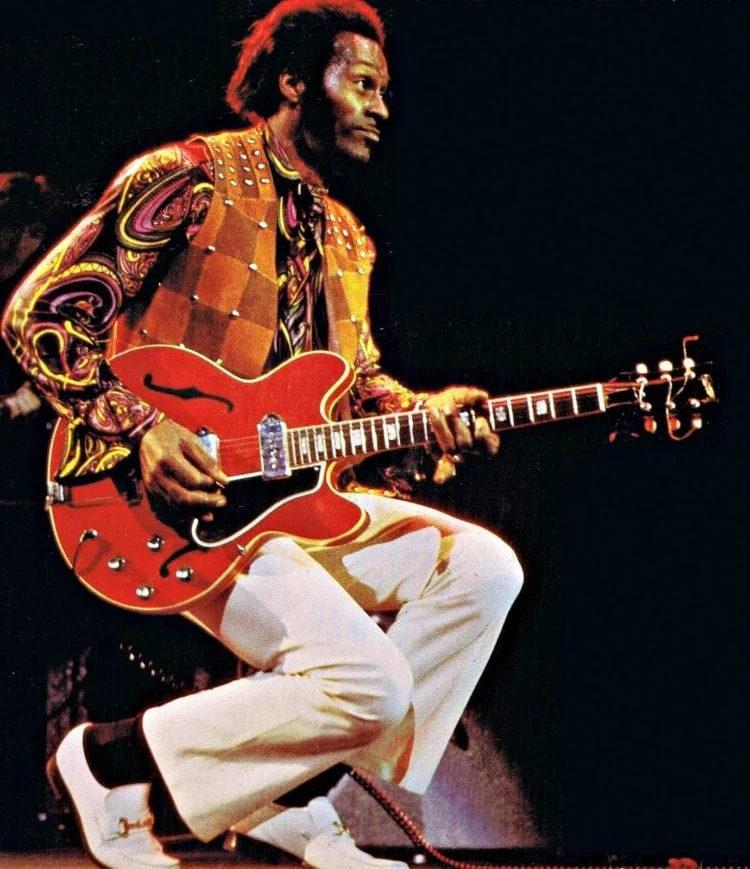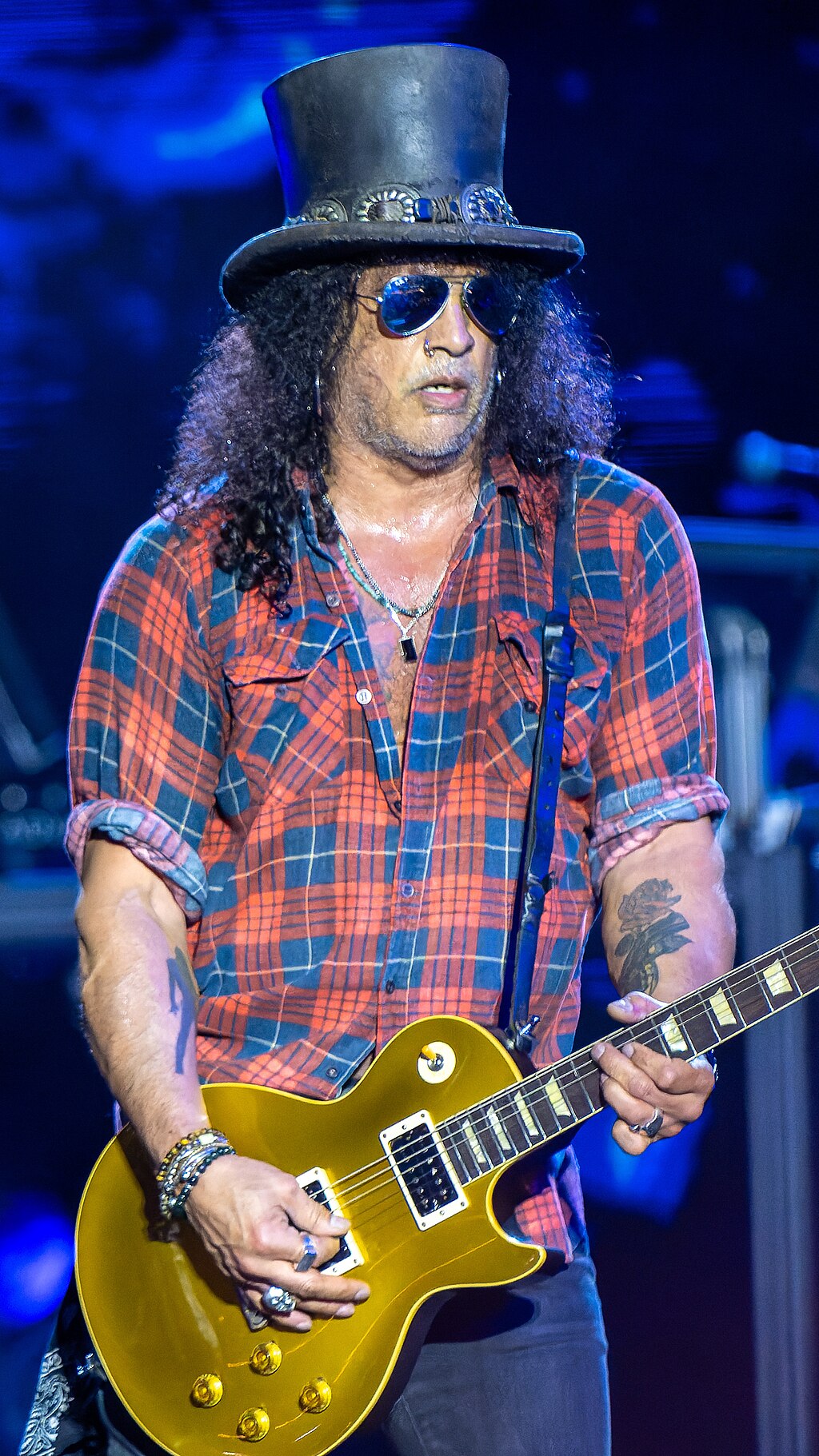Guitar Heroes

Introduction
In the realm of music, the guitar stands as a timeless symbol of artistic expression and sonic innovation. Its strings resonate with the stories of legendary musicians who have shaped the very fabric of our musical tapestry. As a devoted guitarist myself, I find immense joy in exploring the extensive world of guitarists who have left an indelible mark on the history of music. Join me on a journey as I introduce you to four extraordinary artists, each possessing a unique mastery of the guitar: Chuck Berry, Nile Rodgers, Slash and Richie Sambora. As we delve into their distinctive styles, contributions, and the magic they've woven into the chords of our lives, let's celebrate the guitar heroes who have set our hearts ablaze with their unparalleled talents.
1. Chuck Berry

Chuck Berry's guitar wizardry is perhaps best exemplified in his timeless classic, "Johnny B. Goode." This rock and roll anthem not only catapulted Berry into the spotlight but also showcased his ingenious use of the pentatonic scale. "Johnny B. Goode" is a rousing tale of a young, aspiring guitarist from a humble background. Released in 1958, the song's infectious energy and unforgettable guitar riff have made it a cornerstone of rock history.
Deconstruction of the Pentatonic Scale:
At the core of Chuck Berry's magic lies the pentatonic scale, a five-note scale that forms the backbone of countless rock and blues compositions. Berry's brilliance was in harnessing the scale's simplicity to create a riff that not only became instantly recognizable but also served as a foundational lesson for aspiring guitarists worldwide.
Analysis of the Solo:
The song's iconic solo is a masterclass in pentatonic prowess. Berry effortlessly weaves through the scale, delivering a series of bends, slides, and quick, punchy notes that define the essence of rock and roll guitar. The solo is a testament to how a basic scale can be elevated to greatness through inventive phrasing and a distinctive playing style.
Personal Experience:
Learning to play "Johnny B. Goode" was a delightful experience. The simplicity of the pentatonic scale made it easier to learn the riffs but the challenge lies in capturing the nuance and style the Chuck Berry effortless infused into every note. Bonus points if you can solo and duck walk like Chuck Berry!
2. Nile Rodgers

Nile Rodgers stands as a maestro of funk, a guitarist whose rhythmic prowess and infectious grooves have left an indelible mark on the world of music. His approach to funk is a masterclass in precision, innovation, and a relentless commitment to the groove. Nile Rodgers' guitar genius reaches its zenith in the disco anthem "Le Freak" by Chic. This funky masterpiece serves as a testament to Rodgers' unparalleled ability to infuse rhythm and groove into every strum, creating an infectious danceable sound.
Favouring high strings
Nile Rodgers often favors playing chords in higher registers of the guitar. This not only adds brightness to the overall sound but also allows his guitar parts to cut through the mix, providing clarity and definition to the rhythmic patterns. The use of high chords contributes to the crispness and sparkle that is characteristic of Rodgers' funk guitar work.
Major and minor 7th chords
Rodgers frequently incorporates major 7 (maj7) and minor 7 (min7) chords into his playing. These extended chords introduce additional color and complexity to the harmonies. The major 7th chords, with their bright and jazzy quality, can be heard in various Chic compositions, adding sophistication to the overall sound. Meanwhile, the minor 7th chords contribute a soulful and bluesy flavor, enhancing the emotional depth of the music.
Personal Experience:
Learning to emulate Nile Rodgers' distinctive funk guitar technique was exhilarating yet challenging to perfect. While his sound is instantly recognizable, the intricacies of his high chords, major and minor 7th voicings, and rhythmic precision have proven to be both a formidable puzzle.
3. Slash

I never want to draw attention to myself, but thats all I do.
The iconic riffs from "Sweet Child o' Mine", "Paradise City" and "Novemember Rain" are the brainchild of Saul Hudson, more commonly known as Slash. He is the lead guitarist of the hard rock band Guns N' Roses. With his trusty Gibson Les Paul, he is one of the legendary gods of rock music. Slash has etched his name into the annals of rock history through his soulful solos, distinctive top hat, and the timeless riffs that have become the heartbeat of rock anthems.
No need for speed
In most guitar solos, guitarists tend to play alot of notes really fast. But Slash does this sparingly. In most of his solos, he places the melody as the main ingredient for the composition. He shreds only if its necessary as heard towards the end of "Paradise City" and before the final verse of his own song "Anastasia".
Elite Rock Musician
Slash is a music prodigy. He has a signature sense of melody owing to his choice of notes and well use of octaves. If you've listened to his solo in "November Rain", you would have noticed that around the 6 minute mark, a tonal shift occurs, marking the entry of Slash's iconic guitar solo. This solo introduces a distinct rock energy, characterized by powerful guitar riffs, soaring melodies, and a more up-tempo feel. Slash's guitar work in this section is a testament to his ability to infuse emotion and technical prowess, seamlessly transitioning the song from a contemplative ballad to a rock epic.
4. Richie Sambora

Richard Stephen Sambora a.k.a. Richie Sambora, is the former lead guitarist of Bon Jovi. He had a knack for making riffs sound simple and accessible but in actuality they were not easy to play. He transitioned so smoothly that most listeners never realize the fact that he has some frightening dexterity. The impact he had on Bon Jovi was so tremendous that some fans hailed his departure as the beginning of the downfall of the band.
Unique Techniques
I am mesmerized by the solo Richie Sambora plays in "Living on a Prayer", its a combination of expressive bends and vibrato techniques contributing to the emotional impact of the solo. In addition, the solo demonstrates Sambora's strategic use of guitar techniques. From well-placed hammer-ons and pull-offs to fluid legato passages, each technique serves a purpose in creating a diverse and captivating solo. Each technique employed by Sambora serves a purpose, contributing to the diversity and captivation of the solo. The ebb and flow of the solo, from expressive bends that tug at the heartstrings to the dynamic hammer-ons and pull-offs that propel the momentum, create a rich sonic landscape.
Putting the Soul in Music
In an interview in 1992 that was featured on Raw Power, Richie Sambora describes his playing style was influenced by blues and 1960s rock and roll. Blues is a language of emotion, and Sambora, as a blues-influenced guitarist, has mastered its dialect. His use of expressive bends and soulful vibrato, as witnessed in the mesmerizing solo of "Living on a Prayer," can be traced back to the blues tradition. These techniques become more than just notes; they become vessels carrying the weight of emotion.
Great Voice
Richie Sambora has an amazing voice